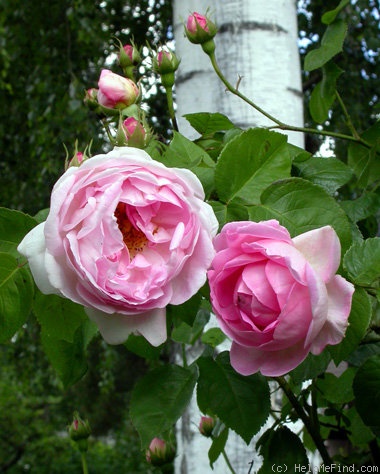|
|
'Constance Spry' rose Description

Photo courtesy of Kajsa Sjödin
HMF Ratings:
77 favorite votes.
Average rating:
EXCELLENT-.
ARS:
Light pink Shrub.
Registration name: Constance Spry
Exhibition name: Constance Spry
Class:
Shrub. (Series: English Rose Collection)
Bloom:
Light pink to rose-pink, rose-pink center. Mild, myrrh fragrance. Average diameter 4". Large, full (26-40 petals), cupped, globular, old-fashioned bloom form. Once-blooming spring or summer.
Habit:
Height: 4'11" to 9'10" (150 to 300cm). Width: 6' to 10' (185 to 305cm).
Growing:
USDA zone 5b and warmer. Can be trained as a climber. Disease susceptibility: susceptible to Mildew, susceptible to rust . Prune after flowering is finished.
Patents:
Patent status unknown (to HelpMeFind).
Notes:
Constance Fletcher (December 5, 1886 Derby - January 3, 1960 Wikfield, Berks.), English educator, florist and author, married Henry Ernest Spry in 1926.
The Plant Science Dept. of the Nova Scotia Agriculture College evaluated 58 English Roses to assess their hardiness and disease-resistance. Their results can be found at: http://www.nsac.ns.ca/nsac/ps/annual96/mapple.htm. Constance Spry was found to be winter hardy.
In September 1998, the Montreal Botanical Garden (Le Jardin Botanique de Montreal) carried out a survey of its roses' resistance to black spot, powdery mildew and rust. This is one of the outstanding varieties which showed a 0% to 5% infection rate. The data were taken on well-established roses.
|